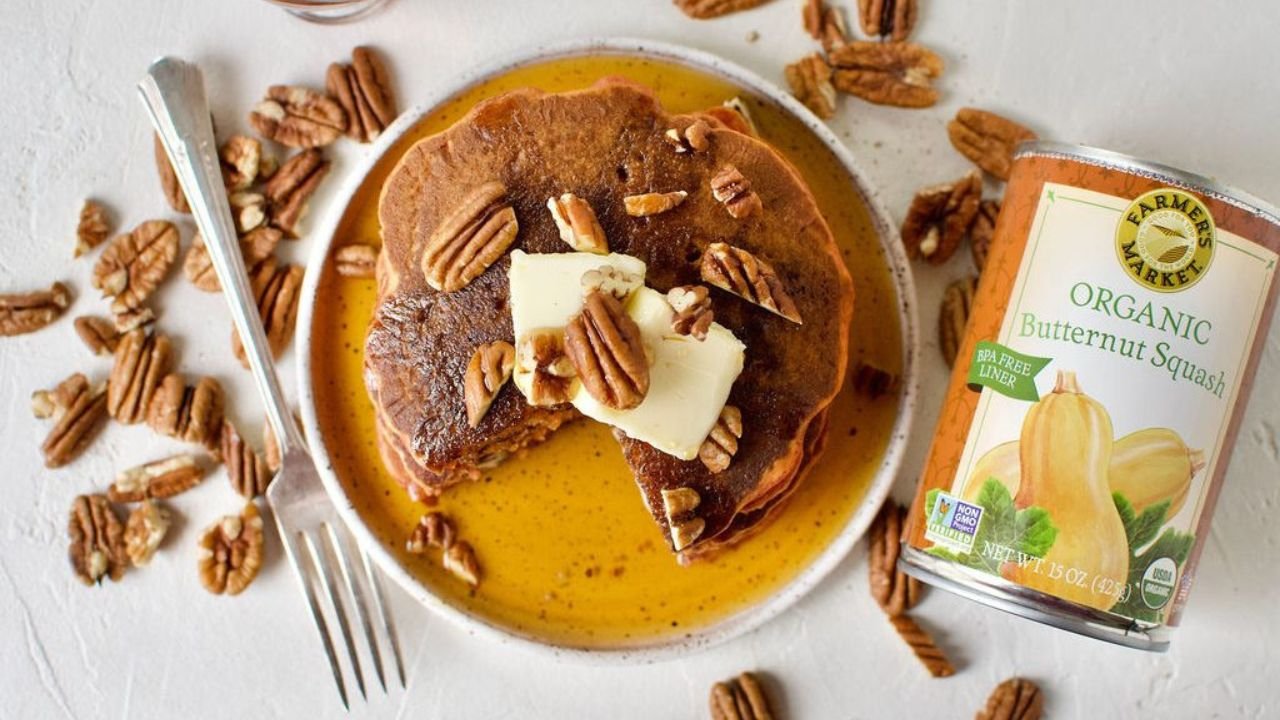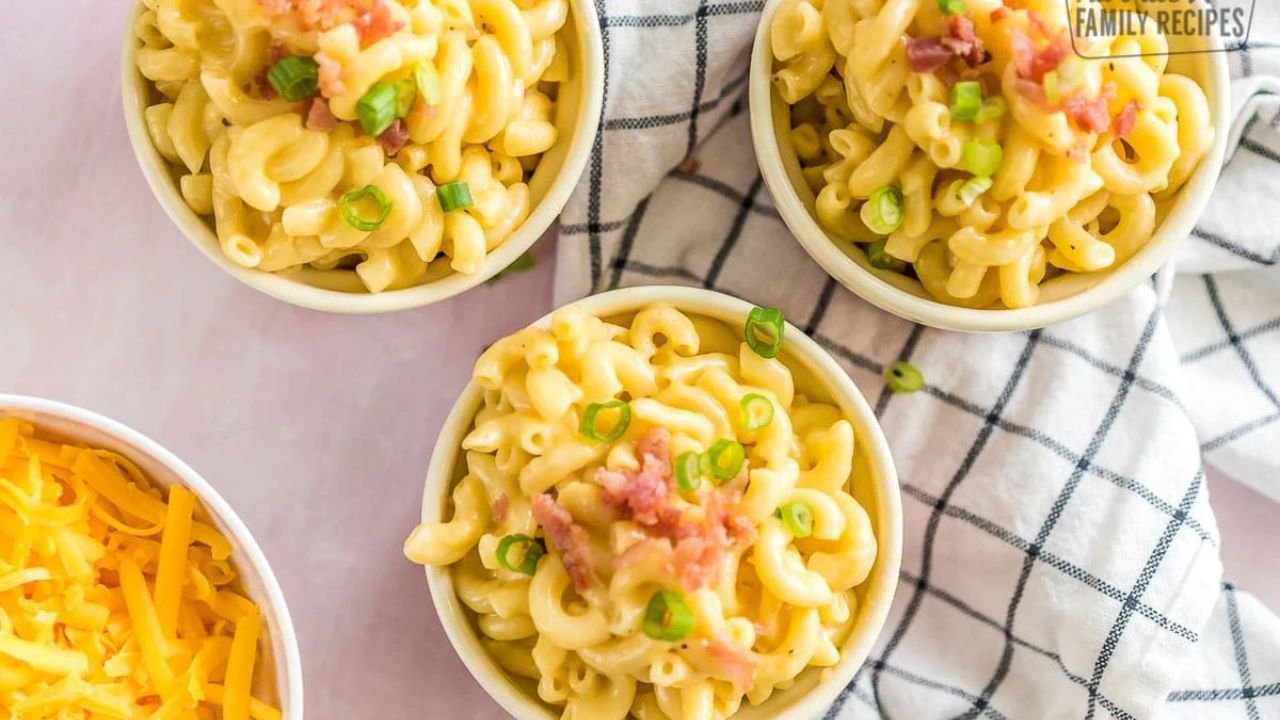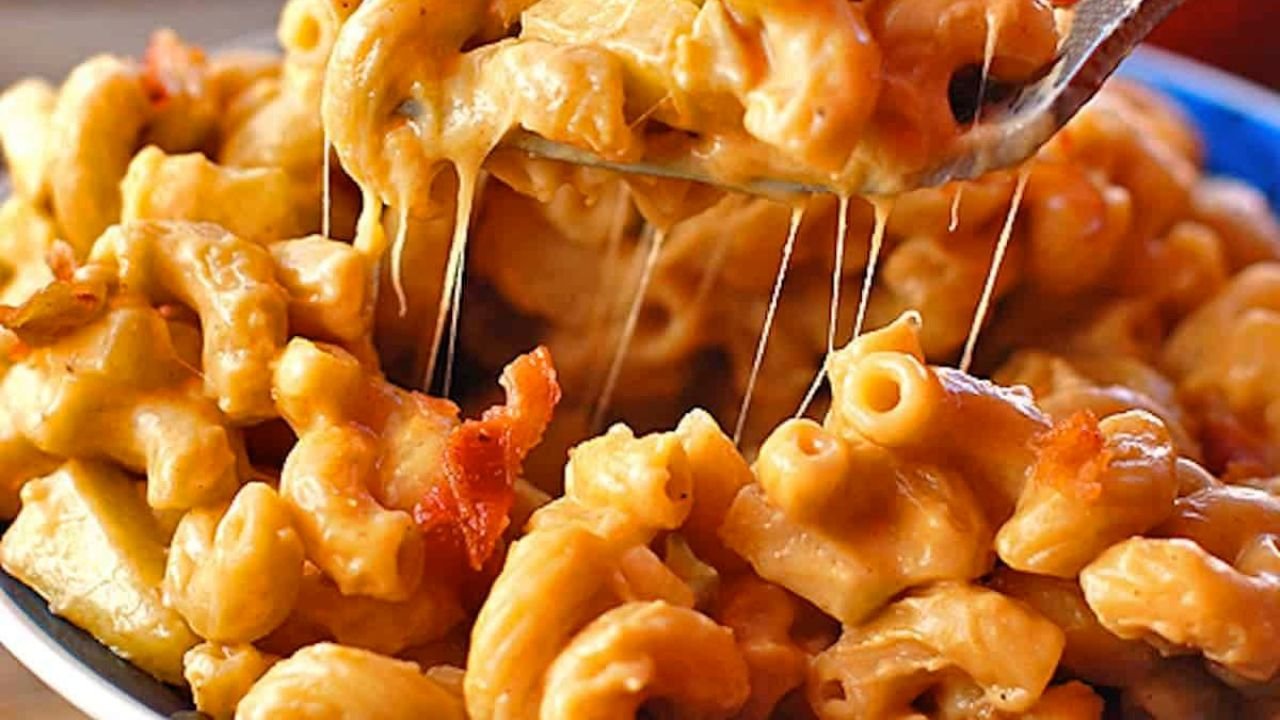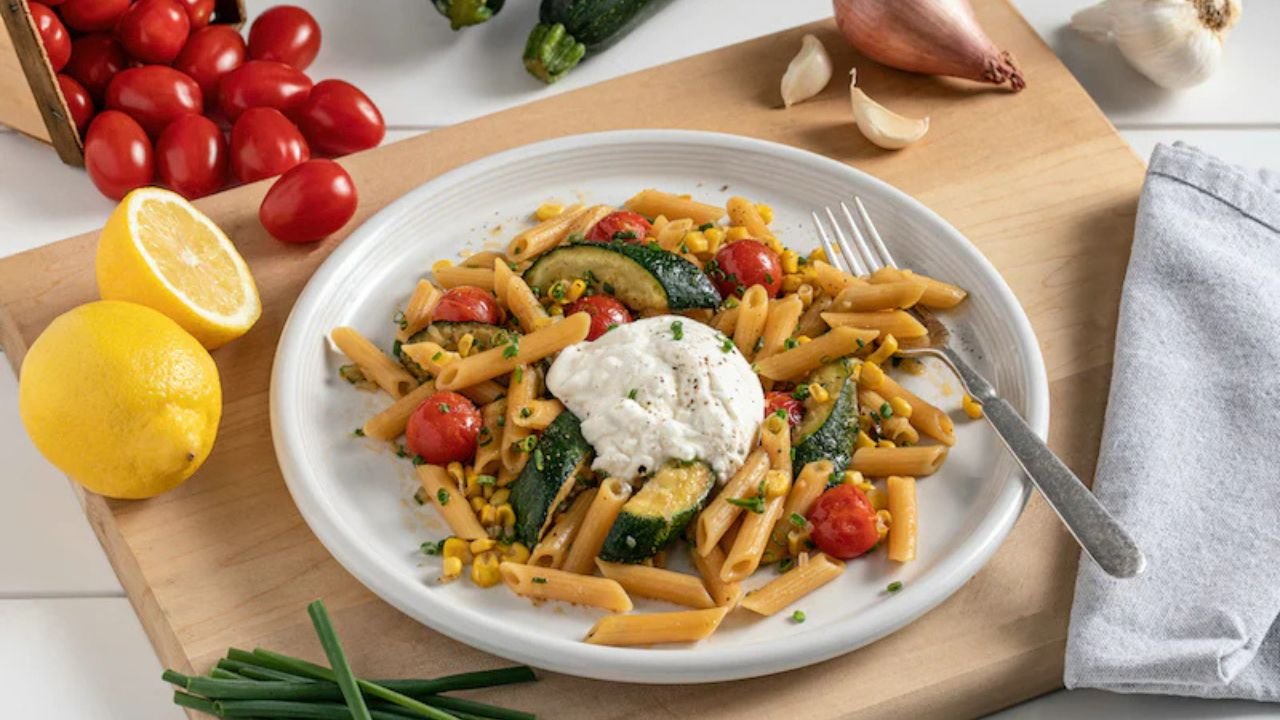Introduction
Pancakes are a beloved breakfast staple enjoyed worldwide, loved for their comforting texture and versatility. Over the centuries, countless variations have emerged, incorporating seasonal ingredients, regional flavors, and innovative techniques. Among these, Butternut Squash Pecan Pancakes stand out as a decadent, nutritious, and flavor-rich option that celebrates the warmth of autumn and winter.
Combining the sweet, nutty flavor of roasted butternut squash with the crunch and richness of pecans creates a harmonious blend of textures and tastes. These pancakes are perfect for festive brunches, holiday mornings, or cozy weekend breakfasts. Their moist, tender crumb paired with the crunch of pecans and a drizzle of syrup or honey makes them irresistible.
This comprehensive guide delves into the origins, variations, detailed recipes, cooking techniques, nutritional insights, presentation ideas, and tips for making perfect Butternut Squash Pecan Pancakes. Whether you’re a seasoned cook or a beginner, you’ll find everything you need to craft these delicious pancakes from scratch.
Historical Context and Cultural Significance
The Evolution of Pancakes
Pancakes have been part of human diets for thousands of years, with ancient civilizations across Greece, Rome, China, and the Middle East developing their own versions. Traditionally, pancakes were made from simple ingredients like flour, water, and eggs, cooked on hot stones or griddles.
Incorporation of Seasonal Ingredients
The use of seasonal vegetables and fruits in pancakes became popular in the 19th and 20th centuries, especially in regions with rich agricultural traditions. Butternut squash, native to North America, has been cultivated for centuries and is a staple in fall and winter cooking, celebrated for its sweetness and versatility.
Modern Innovations
Today, chefs and home cooks alike experiment with incorporating seasonal produce like butternut squash into batter recipes, creating moist, flavorful pancakes that reflect the flavors of the harvest season. The addition of pecans adds a Southern American touch, emphasizing nutty richness and crunch.
Cultural Relevance
In recent years, there’s been a growing trend toward health-conscious and ingredient-driven breakfast options. Butternut squash adds nutritional value, fiber, and moisture, making these pancakes not only delicious but also nourishing. They are especially popular during fall and holiday seasons, aligning with themes of warmth, comfort, and seasonal celebration.
Ingredients and Their Roles
Core Ingredients
- Butternut Squash: Provides moisture, natural sweetness, and nutrients. Its soft, creamy texture makes pancakes moist and tender.
- Flour: Typically all-purpose, but gluten-free options like almond or oat flour can be used for dietary needs.
- Eggs: Bind the ingredients and provide structure.
- Milk or Dairy Alternatives: Add moisture and tenderness. Options include cow’s milk, almond milk, oat milk, or coconut milk.
- Leavening Agents: Baking powder or baking soda to ensure fluffy pancakes.
- Sweeteners: Sugar, honey, maple syrup, or brown sugar for sweetness.
- Spices: Cinnamon, nutmeg, ginger, and allspice for warm, seasonal flavor.
- Pecans: Toasted for crunch, flavor, and added nutrition.
- Butter or Oil: For moisture, richness, and to prevent sticking during cooking.
Optional Add-ins and Variations
- Vanilla Extract: Enhances sweetness and depth.
- Brown Sugar or Molasses: Adds richness and a caramel note.
- Orange Zest or Brandy: For aromatic complexity.
- Yogurt or Sour Cream: For extra moistness and tang.
- Chopped Dried Fruits: Cranberries or raisins for added sweetness.
- Maple Syrup or Honey: For serving and flavor enhancement.
Ingredient Quality Tips
- Use fresh, high-quality eggs.
- Roast or steam the butternut squash for optimal flavor and texture.
- Toast pecans lightly to bring out their nutty aroma.
- Use pure vanilla extract for best flavor.
Preparing Butternut Squash
Selecting the Squash
Choose a firm, heavy butternut squash with smooth skin. Avoid squash with blemishes or soft spots. Medium-sized squash often have the best balance of sweetness and flavor.
Cooking Methods
- Roasting: Cut the squash in half, remove seeds, drizzle with oil, and roast at 400°F (200°C) for about 45 minutes until tender. Roasting enhances sweetness and flavor.
- Steaming: Cut into chunks, steam until soft (about 10-15 minutes). This preserves moisture and nutrients.
- Boiling: Boil chunks in water until tender, then mash.
Preparing the Puree
- Once cooked, let the squash cool slightly.
- Scoop out the flesh with a spoon.
- Puree in a blender or food processor until smooth.
- Measure out the required amount for the recipe.
- Store any leftovers in an airtight container in the refrigerator for up to three days or freeze for longer storage.
Basic Pancake Recipe: Step-by-Step
Ingredients
- 1 cup all-purpose flour
- 1/2 cup mashed roasted butternut squash
- 2 large eggs
- 3/4 cup milk (or dairy alternative)
- 2 tablespoons brown sugar or honey
- 1 teaspoon baking powder
- 1/2 teaspoon baking soda
- 1/2 teaspoon ground cinnamon
- 1/4 teaspoon ground nutmeg
- 1/4 teaspoon salt
- 1/2 cup chopped pecans, toasted
- 2 tablespoons melted butter or oil
- Optional: vanilla extract, orange zest
Instructions
1. Prepare the Wet Ingredients
- In a large mixing bowl, whisk the eggs.
- Add the mashed butternut squash, milk, melted butter, vanilla (if using), and whisk until combined.
2. Mix the Dry Ingredients
- In a separate bowl, sift together the flour, baking powder, baking soda, spices, salt, and sugar.
3. Combine Wet and Dry
- Gradually add the dry ingredients to the wet mixture, folding gently until just combined. Do not overmix; a few lumps are fine.
- Fold in the chopped pecans.
4. Rest the Batter
- Let the batter rest for 5-10 minutes to allow the leavening agents to activate and the gluten to relax, resulting in fluffier pancakes.
5. Cook the Pancakes
- Heat a non-stick skillet or griddle over medium heat. Lightly grease with butter or oil.
- Pour 1/4 cup of batter for each pancake.
- Cook until bubbles form on the surface and the edges look set, about 2-3 minutes.
- Flip and cook for another 2 minutes until golden brown and cooked through.
6. Serve
- Serve hot with maple syrup, additional toasted pecans, whipped cream, or fruit.
Tips for Perfect Pancakes
- Consistent Size: Use a measuring cup or scoop for uniform pancakes.
- Temperature Control: Cook on medium heat; too high burns the exterior before the interior cooks.
- Rest the Batter: Resting improves fluffiness.
- Toasting Pecans: Toast pecans lightly in a dry skillet over low heat for enhanced flavor.
- Add Extra Texture: Incorporate chocolate chips, dried cranberries, or shredded coconut.
- Keep Warm: Keep cooked pancakes warm in an oven at 200°F (90°C) while finishing the batch.
Variations and Creative Twists
Gluten-Free Version
- Use almond flour, oat flour, or gluten-free baking mixes.
Vegan Pancakes
- Substitute eggs with flaxseed or chia seed gel (1 tablespoon ground flaxseed mixed with 3 tablespoons water per egg).
- Use plant-based milk and vegan butter or oil.
Spiced Up
- Increase cinnamon, add cardamom, or a dash of cloves.
- Incorporate a splash of bourbon or brandy for depth.
Toppings and Syrups
- Fresh fruit: blueberries, sliced bananas, apple compote.
- Nut butters: almond, peanut, or cashew.
- Drizzle with caramel sauce or honey.
- Sprinkle with additional toasted pecans or coconut flakes.
Savory Version
- Replace sweeteners with herbs and spices like thyme, sage, or chives.
- Add cooked bacon or sausage.
Nutritional Insights
Nutritional Benefits
- Butternut squash is rich in vitamins A and C, potassium, and fiber—boosting immunity and digestion.
- Pecans provide healthy monounsaturated fats, protein, and antioxidants.
- Eggs offer high-quality protein and essential amino acids.
- Spices like cinnamon have anti-inflammatory properties.
Calorie and Macronutrient Breakdown
- A typical serving (~3 pancakes) contains approximately 350-450 calories, depending on toppings.
- High in carbs, moderate in fats, and rich in protein.
Dietary Considerations
- For gluten-free diets, use appropriate flours.
- For vegan or dairy-free diets, substitute ingredients accordingly.
- For low-sugar options, reduce or omit added sweeteners.
Health Tips
- Incorporate more vegetables into the batter (e.g., shredded zucchini or carrots) for added nutrition.
- Use nut butters or seeds for healthy fats.
- Watch portion sizes for calorie-conscious diets.
Presentation and Serving Ideas
- Stack pancakes high on a decorative plate.
- Garnish with extra pecans, fresh fruit, and a dusting of powdered sugar.
- Serve with a side of Greek yogurt or cottage cheese for added protein.
- Drizzle with flavored syrups, caramel, or honey.
- Accompany with a hot beverage like spiced chai or coffee.
Pairings and Complementary Dishes
- Beverages: Apple cider, spiced chai, specialty coffee, or fresh orange juice.
- Side Dishes: Bacon, sausage, roasted sweet potatoes, or a fresh fruit salad.
- Additional Toppings: Whipped cream, Greek yogurt, or mascarpone cheese.
Advanced Techniques and Tips
- Layering Flavors: Add orange zest or a splash of bourbon to enhance depth.
- Texture Enhancement: Incorporate chopped dried fruits or shredded coconut.
- Presentation: Use stacking and garnishing to elevate visual appeal.
- Cooking Equipment: Use a non-stick griddle for even cooking; a cast-iron skillet imparts a crispier crust.
Troubleshooting Common Issues
- Pancakes are dense: Overmixing the batter or not resting it can cause heavy pancakes. Mix gently and rest the batter.
- Burning or uneven cooking: Adjust heat to medium and use a good quality non-stick surface.
- Pancakes are too dry: Add more butternut squash or milk to increase moisture.
- Pecans not crunchy: Toast pecans separately and add just before serving.
Environmental and Ethical Considerations
- Ingredient Sourcing: Use organic or locally sourced ingredients when possible.
- Sustainable Nut Consumption: Purchase pecans from sustainable farms.
- Food Waste Reduction: Use leftover squash and pecans in other recipes.
Conclusion
Butternut Squash Pecan Pancakes beautifully marry seasonal flavors, nutritional benefits, and comforting textures. Their rich, slightly sweet profile, combined with the crunch of toasted pecans and aromatic spices, makes them a standout breakfast or brunch dish. Whether enjoyed on a cozy weekend morning or served at festive gatherings, these pancakes offer a heartwarming, delicious experience.
From selecting the perfect squash to mastering the cooking technique, this guide provides all the tools needed to create pancake perfection. Experiment with variations, toppings, and presentation to make this classic recipe your own, capturing the essence of fall and winter in every bite.




